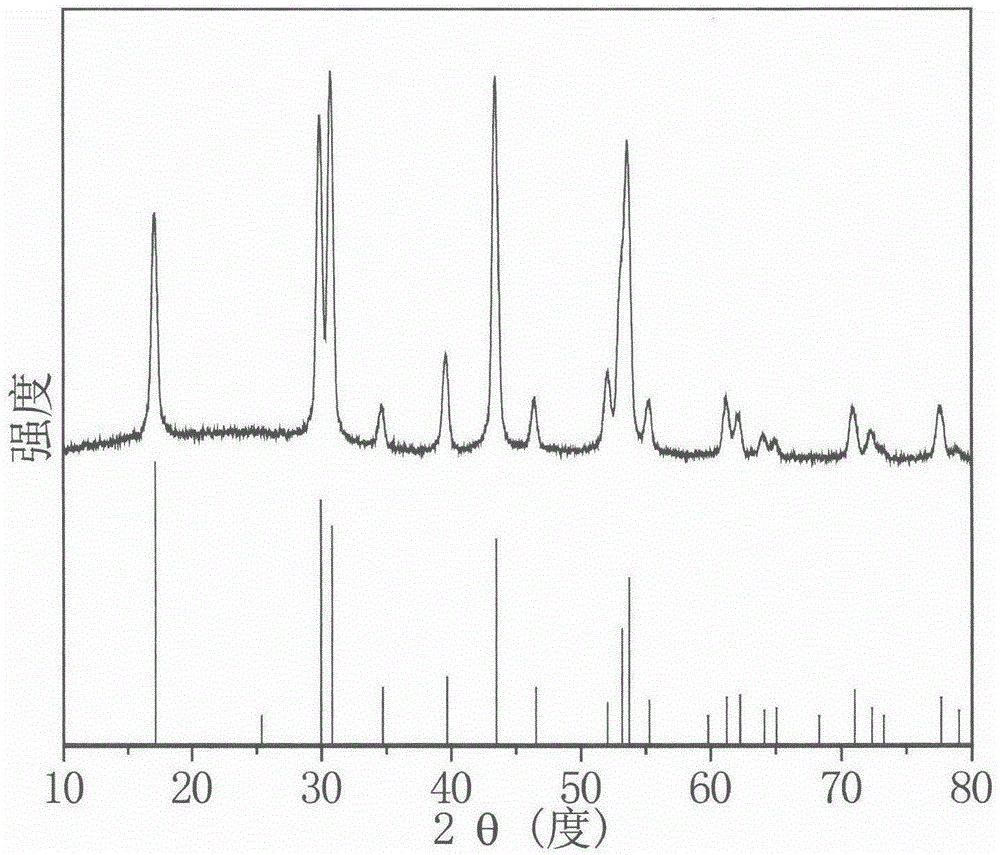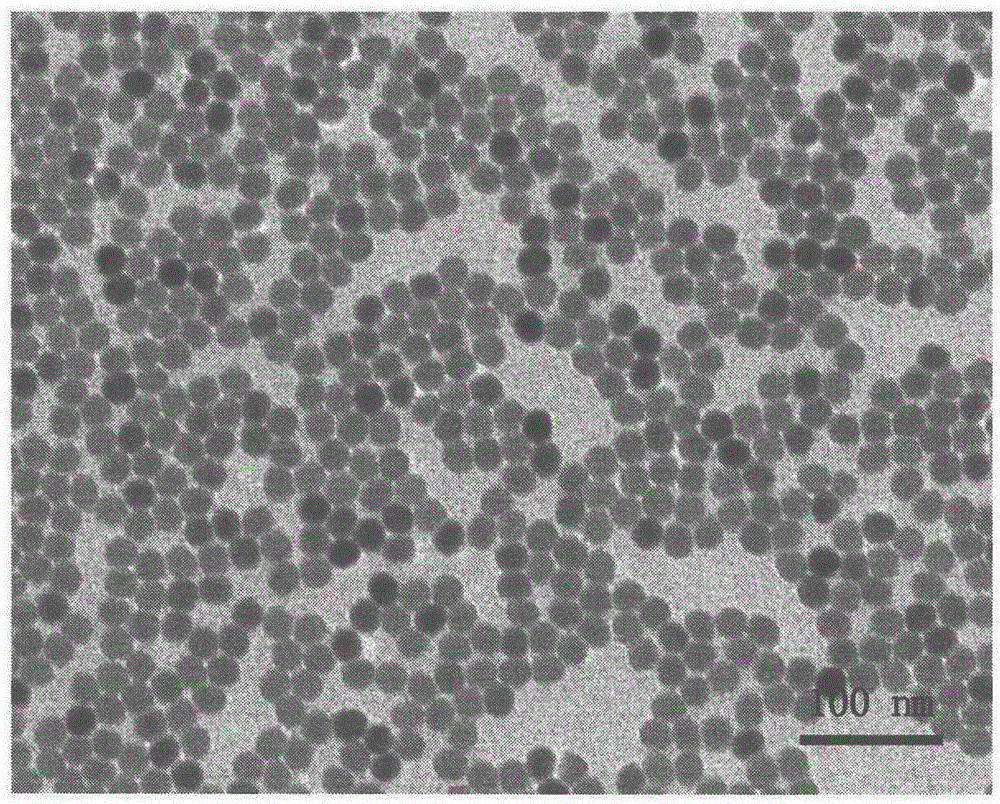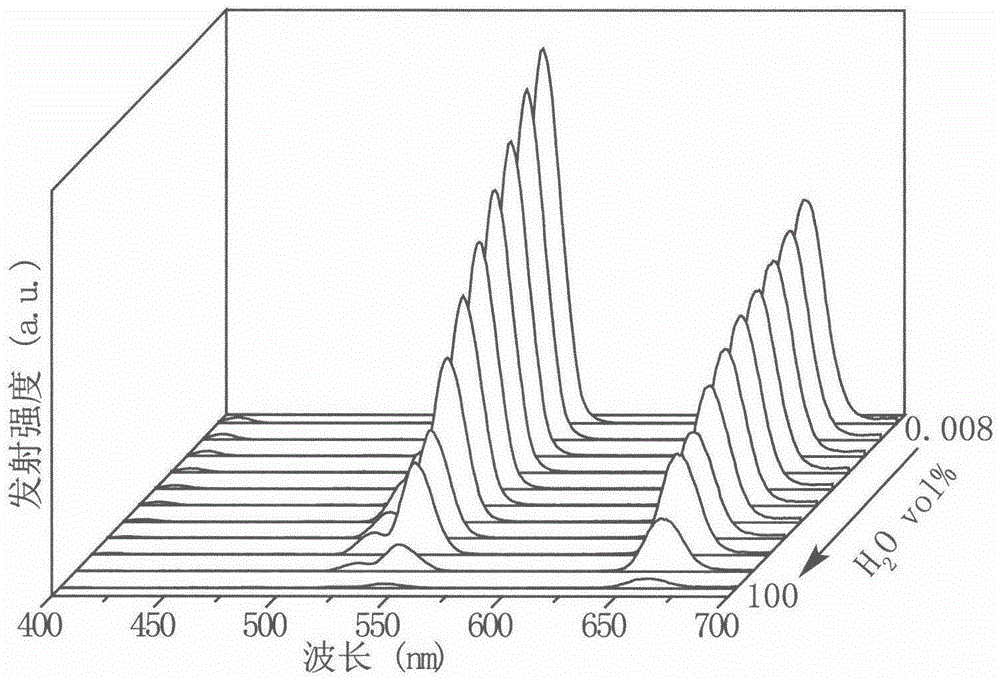Method for measuring water content in organic solvent through utilization of upconversion nanometer particles
A technology of organic solvents and nanoparticles, which is applied in the field of conversion of luminescence on rare earth nanoparticles, can solve the problems of weak anti-interference ability, poor stability, and non-reusable organic luminescent molecules, achieve good photostability, and detect changes in water content Effect
- Summary
- Abstract
- Description
- Claims
- Application Information
AI Technical Summary
Problems solved by technology
Method used
Image
Examples
Embodiment 1
[0025] By testing NaYF when organic solvents contain different water contents 4 : The emission spectrum of Yb / Er nanoparticles is used to fit the relative light intensity change curve with water content, taking N,N-dimethylformamide as an example.
[0026] (1) Configure the sample to be tested
[0027] NaYF 4 : Yb / Er nanoparticles dispersed in N, N-dimethylformamide with water content of 0.008, 0.024, 0.108, 0.308, 0.808, 1.508, 3.008, 8.008, 10, 50, 100% (volume ratio), and to be The assay system contained the same concentration of nanoparticles (0.1 mg / mL).
[0028] (2) Acquisition of emission spectra of up-conversion nanoparticles
[0029] The up-conversion emission spectrum was collected on a fluorescence spectrophotometer connected to an external power-adjustable 980 nm laser ( image 3 ). The scanning range is 400nm to 700nm, the scanning speed is 240nm / min, the excitation and emission grating widths are both 10nm, and the gain voltage is 800V. The selected 980nm i...
Embodiment 2
[0036] By testing NaYF when organic solvents contain different water contents 4 : The emission spectrum of Yb / Er nanoparticles is used to fit the curve of relative light intensity changing with water content, taking dimethyl sulfoxide as an example.
[0037] (1) Configure the sample to be tested
[0038] NaYF 4 : Yb / Er nanoparticles are dispersed in dimethyl sulfoxide with water content of 0.008, 0.024, 0.108, 0.308, 0.808, 1.508, 3.008, 8.008, 10, 50, 100% (volume ratio), and the system to be tested contains the same Concentration of nanoparticles (1mg / mL).
[0039] (2) Acquisition of emission spectra of up-conversion nanoparticles
[0040] The up-conversion emission spectrum was collected on a fluorescence spectrophotometer connected to an external power-adjustable 800 nm laser ( Figure 5 ). The scanning range is 400nm to 700nm, the scanning speed is 240nm / min, the excitation and emission grating widths are both 10nm, and the gain voltage is 800V. The selected 800nm ...
Embodiment 3
[0047] By testing NaYF when organic solvents contain different water contents 4 : The emission spectrum of Yb / Er nanoparticles is used to fit the relative light intensity change curve with water content, taking ethanol as an example.
[0048] (1) Configure the sample to be tested
[0049] NaYF 4 : Yb / Er nanoparticles are dispersed in ethanol with water content of 0.008, 0.024, 0.108, 0.308, 0.808, 1.508, 3.008, 8.008, 10, 50, 100% (volume ratio), and the system to be tested contains the same concentration of nanoparticles (2 mg / mL).
[0050] (2) Acquisition of emission spectra of up-conversion nanoparticles
[0051] The up-conversion emission spectrum was collected on a fluorescence spectrophotometer connected to an external power-adjustable 1500 nm laser ( Figure 5 ). The scanning range is 400nm to 700nm, the scanning speed is 240nm / min, the excitation and emission grating widths are both 10nm, and the gain voltage is 800V. The selected 1500nm is the optimal excitation w...
PUM
| Property | Measurement | Unit |
|---|---|---|
| concentration | aaaaa | aaaaa |
Abstract
Description
Claims
Application Information
 Login to View More
Login to View More - R&D
- Intellectual Property
- Life Sciences
- Materials
- Tech Scout
- Unparalleled Data Quality
- Higher Quality Content
- 60% Fewer Hallucinations
Browse by: Latest US Patents, China's latest patents, Technical Efficacy Thesaurus, Application Domain, Technology Topic, Popular Technical Reports.
© 2025 PatSnap. All rights reserved.Legal|Privacy policy|Modern Slavery Act Transparency Statement|Sitemap|About US| Contact US: help@patsnap.com



